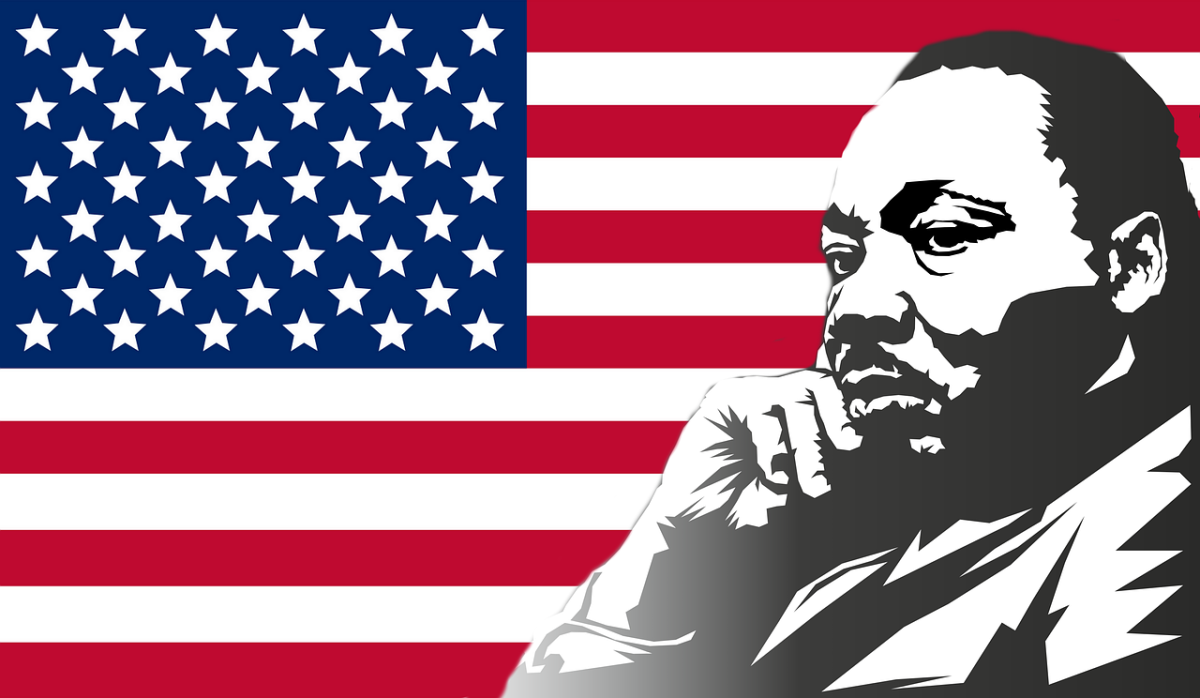Martin Luther King Jr’s Day just passed, granting millions of people time off of work; however, most Americans forget the story behind the immensely influential man the holiday celebrates.
Martin Luther King Jr’s Day is a celebration of Martin Luther King’s birth on January 15, 1929. Despite common misconception, MLK Day does not always fall on his birthday, rather it always takes place on the third Friday of January. This year’s celebration would coincidentally be on the actual date of his birth, which will not recur again until 2029.
Martin was born in Atlanta, Georgia. Growing up, one of his most important role models was his father; King Sr. was a Christian pastor, which would eventually influence Martin to become a minister himself. This action would lead him into activism.
King Jr. was recognized as such a prolific activist because of his refusal to fight against his oppressors physically. Instead he was known for his peaceful protests, such as his infamous March on Washington in 1963, which would end with his deliverance of the equally famous “I Have A Dream” speech.
The idea to denote a federal holiday to commemorate equal rights first surfaced in 1968. John Conyers would first bring the notion in front of congress as a representative of Michigan. Conyers was so adamant to make a Federal holiday that he would bring up the topic every year for 15 years, despite MLK’s assassination.
John Cavangh, the director of the Institute for Policy Studies would remark that Representative Conyers was, “Critical component, an organizing force in making Martin Luther King’s birthday better.”
Finally in 1979, John Conyers was satisfied as the bill passed by just five votes. The bill would amend title five of the United States Code, officially making Martin Luther King Jr. Day a national holiday.
Unfortunately, Conyers would continue to bring up the issue in congress because it was the state’s individual choice if they wanted to enforce the holiday. Even though Martin Luther King Jr. Day had become official, it was not celebrated by all Americans.
Illinois would be the first state to accept the change soon after the bill passed; however, many states would rename the day, or even refuse to accept the holiday altogether.
California withheld the holiday until 1982. A civil rights group known as the “Apollos,” coined by the recent space mission of the time, consisted of high schoolers from Oakland Technical High School. The young adults set their goal to ratify the holiday by collecting signatures from their area. Their efforts were eventually rewarded as they achieved their goal, with the state finally celebrating Martin Luther King Jr. day in January of 1982.
Many states were far more resistant to the change. States such as Arizona and Utah would be some of the last states to fully recognize the holiday. Finally, in the year 2000, all 50 states would share the same name for the holiday as well as enforcing its federal holiday status, granting state workers and students the day off.
While most people take the day off, many activists see the day as “a day on”. Thousands of people across the country take time to help their communities for the day.
AmeriCorps is a group which aids in the discovery of volunteer opportunities across the country. AmeriCorps has planned the ‘MLK Day of Service’ annually since 1994, providing countless ways for citizens to help their communities for decades.
Ray Navarro is a senior volunteer. He says AmeriCorps and its opportunities, “gave me a purpose to get up.”
Martin Luther King Jr. has had a massive impact on American history, leading many to follow in his peaceful footsteps in order to achieve change in their communities either through activism or volunteer work.





